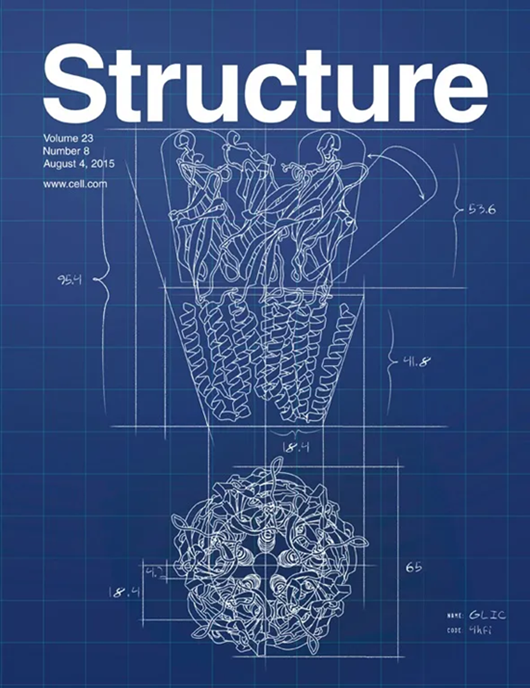Acquisition of quaternary trimer interaction as a key step in the lineage maturation of a broad and potent HIV-1 neutralizing antibody
IF 4.3
2区 生物学
Q2 BIOCHEMISTRY & MOLECULAR BIOLOGY
引用次数: 0
Abstract
Although most broadly neutralizing antibodies (bNAbs) specific for the CD4-binding site (CD4-BS) of HIV-1 interact with a single gp120 protomer, a few mimic the quaternary binding mode of CD4, making contact with a second protomer through elongated heavy chain framework 3 (FRH3) or complementarity-determining region 1 (CDRH1) loops. Here, we show that a CDRH3-dominated anti-CD4-BS bNAb, CH103, establishes quaternary interaction despite regular-length FRH3 and CDRH1. This quaternary interaction is critical for neutralization and is primarily mediated by two FRH3 acidic residues that were sequentially acquired and subjected to strong positive selection during CH103 maturation. Cryoelectron microscopy (cryo-EM) structures confirmed the role of the two FRH3 acidic residues in mediating quaternary contact and demonstrated that CH103 reaches the adjacent gp120 protomer by virtue of its unique angle of approach. Thus, the acquisition of quaternary interaction may constitute a key step in the lineage maturation of a broad and potent HIV-1 neutralizing antibody.

获得四聚三聚体相互作用是广泛和有效的HIV-1中和抗体谱系成熟的关键步骤
尽管大多数针对HIV-1 CD4结合位点(CD4- bs)的广泛中和抗体(bNAbs)与单个gp120原体相互作用,但少数模拟CD4的四级结合模式,通过长链重链框架3 (FRH3)或互补决定区1 (CDRH1)环与第二个原体接触。在这里,我们发现cdrh3主导的抗cd4 - bs bNAb CH103,尽管FRH3和CDRH1长度正常,但仍能建立四元相互作用。这种四元相互作用对中和至关重要,主要由两个FRH3酸性残基介导,这两个残基在CH103成熟过程中依次获得并受到强烈的正选择。低温电子显微镜(cro - em)结构证实了两个FRH3酸性残基在介导四元接触中的作用,并证明CH103凭借其独特的接近角度到达邻近的gp120原聚物。因此,四级相互作用的获得可能是广泛而有效的HIV-1中和抗体谱系成熟的关键步骤。
本文章由计算机程序翻译,如有差异,请以英文原文为准。
求助全文
约1分钟内获得全文
求助全文
来源期刊

Structure
生物-生化与分子生物学
CiteScore
8.90
自引率
1.80%
发文量
155
审稿时长
3-8 weeks
期刊介绍:
Structure aims to publish papers of exceptional interest in the field of structural biology. The journal strives to be essential reading for structural biologists, as well as biologists and biochemists that are interested in macromolecular structure and function. Structure strongly encourages the submission of manuscripts that present structural and molecular insights into biological function and mechanism. Other reports that address fundamental questions in structural biology, such as structure-based examinations of protein evolution, folding, and/or design, will also be considered. We will consider the application of any method, experimental or computational, at high or low resolution, to conduct structural investigations, as long as the method is appropriate for the biological, functional, and mechanistic question(s) being addressed. Likewise, reports describing single-molecule analysis of biological mechanisms are welcome.
In general, the editors encourage submission of experimental structural studies that are enriched by an analysis of structure-activity relationships and will not consider studies that solely report structural information unless the structure or analysis is of exceptional and broad interest. Studies reporting only homology models, de novo models, or molecular dynamics simulations are also discouraged unless the models are informed by or validated by novel experimental data; rationalization of a large body of existing experimental evidence and making testable predictions based on a model or simulation is often not considered sufficient.
 求助内容:
求助内容: 应助结果提醒方式:
应助结果提醒方式:


